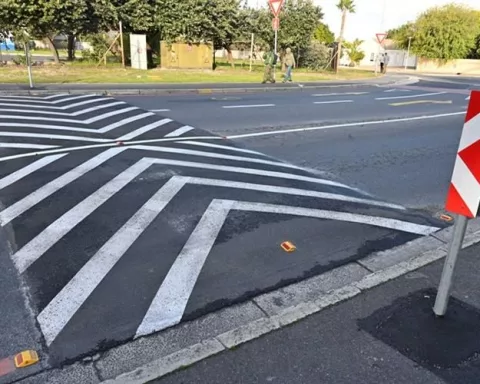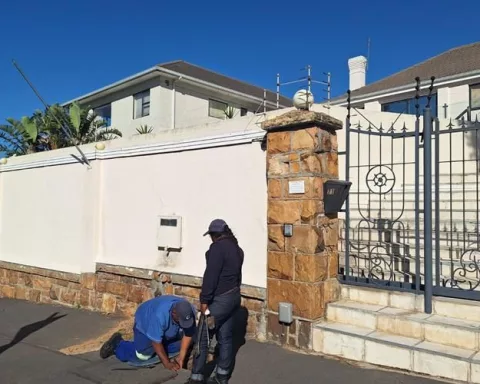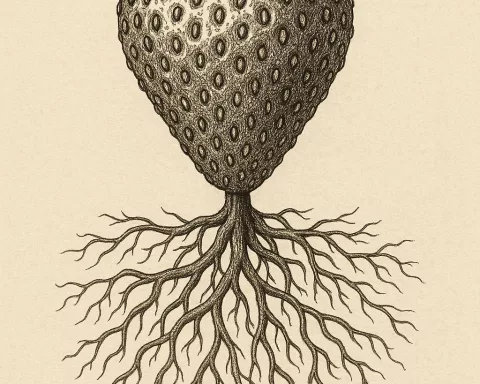On September 1, 2024, Groot Constantia’s historic bell, an artifact from 1814, mysteriously disappeared, shaking the local community. With the help of the police and the vigilant Constantia Watch group, the investigation led to the discovery of the bell’s clapper and the arrest of two suspects. This theft became a rallying cry for the community to unite in preserving their rich heritage. Though the bell is still missing, efforts continue to bring it back, highlighting the importance of protecting cultural treasures for future generations.
What happened to Groot Constantia’s historic bell?
On September 1, 2024, Groot Constantia’s historic bell, dating back to 1814, was reported missing. Local authorities, in collaboration with the community, launched an investigation, leading to the discovery of the bell’s clapper in November 2024 and the arrest of two suspects involved in the theft.
A Rich Tapestry of Heritage
Nestled just outside Cape Town, Groot Constantia stands as a testament to South Africa’s vibrant history. Established in 1685, this estate weaves narratives of bygone eras into the present, serving as a cultural cornerstone. Yet, a recent incident cast a shadow over its historical grandeur. On September 1, 2024, the iconic brass bell, an artifact dating back to 1814, was reported missing. This theft sent ripples through the community, prompting an immediate response from local authorities.
The missing bell symbolizes more than just a historical artifact; it represents an enduring legacy that connects generations. The alarm raised by its disappearance underscores the importance of cultural heritage in a world where such treasures are increasingly vulnerable. The swift action by law enforcement highlights the community’s deep respect and appreciation for these irreplaceable pieces of history.
In the wake of the theft, the Diep River Detective Service, alongside the Wildlife Trafficking and Cultural Heritage Working Group of the Hawks in the Western Cape, launched a thorough investigation. Their efforts reflect an unwavering commitment to protecting cultural legacies, illustrating the significant role law enforcement plays in preserving history.
Community and Collaboration
The local community’s involvement proved pivotal in the unfolding investigation. The Constantia Community Police Sub-Forum, known as Constantia Watch, played an active role, showcasing the power of collective vigilance. Their dedication highlights the communal resolve to safeguard local heritage, fostering a sense of shared responsibility that transcends individual interests.
This collaboration between law enforcement and the community represents a broader movement towards preserving cultural history. The intricate dance between these parties exemplifies how joint efforts can lead to significant breakthroughs in safeguarding heritage. The unified front serves as a model for how communities and authorities can work in tandem to protect historical treasures.
In November 2024, the investigation gained momentum with the discovery of the bell’s clapper in Constantia. This breakthrough marked a significant development, suggesting that justice was inching closer. Yet, the bell itself remains elusive, continuing to challenge those who seek to reclaim this piece of history. The ongoing search underscores the relentless efforts of both the community and authorities in their quest to restore what was lost.
Unraveling the Web of Theft
As the investigation unfolded, two suspects emerged as central figures in this tale of intrigue. The first suspect was apprehended on November 1, 2024, at the Wynberg Magistrates’ Court, during proceedings for an unrelated case. The second suspect’s arrest followed on February 15, 2025, on Spaanschemat River Road, Constantia, carried out by the Constantia Watch SRT and K9 unit. This suspect’s connection to another case involving presumed stolen property added layers to the unfolding narrative.
Both suspects’ ties to the informal settlement behind Checkers Emporium paint a complex picture of the social dynamics at play. The connections and motivations often found in such cases highlight the broader challenges law enforcement faces when tackling crimes that intersect with socio-economic factors. These details enrich our understanding of the intricate web surrounding such thefts, offering insights into the broader issues at hand.
Charges against the suspects include theft and contravention of Section 27(18) of the National Heritage Resources Act, underscoring the severity with which these crimes are viewed. The robust legal framework in place to protect cultural heritage in South Africa serves as a deterrent, reinforcing the sanctity of historical artifacts and the consequences for those who threaten them.
A Call to Preserve Heritage
While the case of the missing bell remains unresolved, the relentless pursuit of justice sends a resounding message: thefts of historical artifacts will face consequences. This commitment to justice resonates deeply, emphasizing the value placed on preserving the cultural tapestry that defines a nation. The ongoing appeal from Groot Constantia for information, with a reward of up to R20,000, invites the public to participate in this shared mission.
This call to action not only engages the community but also reinforces the collective responsibility inherent in heritage conservation. Beyond the immediate circumstances, the incident invites reflection on the broader implications of protecting cultural heritage. It parallels global efforts to shield cultural treasures from the threats of theft and vandalism, aligning with historical and artistic movements that champion the preservation of cultural touchstones.
In the realm of art and history, artifacts like the Groot Constantia bell serve as tangible connections to the past. They embody the stories, traditions, and values that define a community’s identity. Protecting such artifacts goes beyond legal obligations; it touches the heart of cultural continuity and identity, urging societies to cherish and safeguard their historical legacies.
Reflecting on the Future
The narrative of the stolen bell intertwines with the broader theme of heritage at risk, underscoring the necessity of vigilance and proactive measures in safeguarding our past. As societies evolve, so too must the strategies for protecting the symbols of history that resonate in the present. This case challenges us to reflect on the intrinsic value of cultural heritage and our role in its preservation.
Ultimately, the case of Groot Constantia’s missing bell invites us to consider the measures we can take to ensure the survival of cultural heritage for future generations. In this endeavor, every effort—from community involvement to legislative reinforcement—contributes to a legacy that transcends time. By embracing these responsibilities, we honor the past while securing its place in the future, ensuring that the echoes of history continue to resonate for years to come.
“`markdown
What happened to Groot Constantia’s historic bell?
On September 1, 2024, Groot Constantia’s historic bell, dating back to 1814, was reported missing. Local authorities collaborated with the community to launch an investigation, leading to the discovery of the bell’s clapper in November 2024 and the arrest of two suspects involved in the theft.
Who are the suspects involved in the theft?
Two suspects were identified during the investigation. The first suspect was apprehended on November 1, 2024, at the Wynberg Magistrates’ Court while attending an unrelated case. The second suspect was arrested on February 15, 2025, on Spaanschemat River Road, Constantia, and was linked to another case involving presumed stolen property.
How has the local community responded to the theft?
The theft of Groot Constantia’s historic bell has galvanized the local community, fostering a collective sense of responsibility to safeguard their heritage. The Constantia Watch group played a crucial role in the investigation, demonstrating the power of community vigilance in the preservation of cultural treasures.
What actions are being taken to recover the bell?
Efforts to recover the missing bell are ongoing, spearheaded by local authorities and reinforced by community involvement. Groot Constantia is actively appealing for information regarding the bell’s whereabouts, offering a reward of up to R20,000 for any leads that could assist in its recovery.
Why is the bell considered culturally significant?
The bell is not just a historical artifact; it represents the enduring legacy connecting generations of South Africans. As a symbol of Groot Constantia’s rich history, it embodies the narratives and values that define the community’s identity, making its preservation vital for future generations.
What legal consequences do the suspects face?
The suspects face serious charges, including theft and violations of the National Heritage Resources Act. This legal framework underscores the importance of protecting cultural artifacts and serves as a deterrent against similar crimes, reinforcing the community’s commitment to preserving its heritage.
“`












